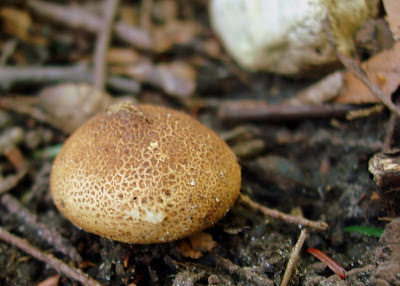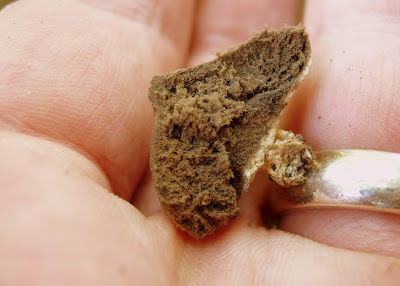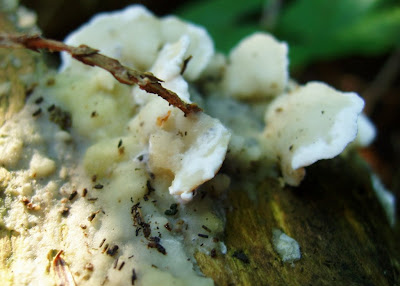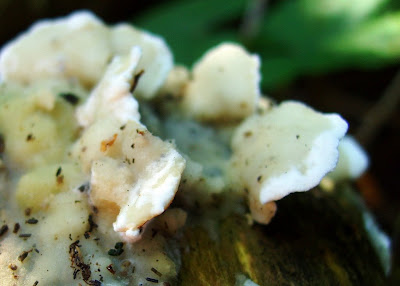
It had been a couple of weeks since I had been down in the valley, and the balance and variety of plants appear to have shifted. This time, while making my way through the valley forest, along the way I paid very careful attention to the valley floor to see if I could see any new mushrooms and fungus.

Within a few minutes I was rewarded for my patience and curiosity. This round brown creature was a small as a grape - about 4 or 5 of them scattered on flat, bare, damp earth section of the forest floor.

They were fairly firmly attached to the soil, and I pried one up carefully to preserve the root or base structure. This helps with identification.

Referring to my Roger Philips Mushrooms guide, I found out later that this is a Leopard Earthball.

location: North America, Europe
edibility: Inedible
fungus colour: Yellow, Brown
normal size: Less than 5cm
cap type: Other
stem type: Lateral, rudimentary or absent
spore colour: Purplish to black
habitat: Grows on the ground
Scleroderma areolatum Ehr. syn. S. lycoperdoides Schwein. Netzbovist Leopard Earthball. Fruit body 1–3(4)cm across, subglobose, tapering into a thick rooting stalk which passes into a few strong mycelial strands, yellowish-brown covered in smooth very dark scales surrounded by a ring giving a dotted, reticulate pattern when the scales have been worn off, opening by an irregular slit or pore. Gleba deep purplish-brown. Spores dark brown, globose, 9–14m in diameter, covered in spines 1.5m long. Habitat damp places on bare ground or amongst sparse grass or moss. Season autumn. Occasional. Not edible. Distribution, America and Europe.

I cut it open with my knife to find that the inside is full of spores. If you tap it on the intact ball, a puff of 'smoke' appears through a slit or a rip in the top of the mushroom.

You can see the dark spore powder in the palm of my hand above.

I'm not sure what this mushroom is. I suspect is is an immature polypore of some kind.

Here's a closer shot. Any thoughts?
Cheers,
Mungo




.JPG)

